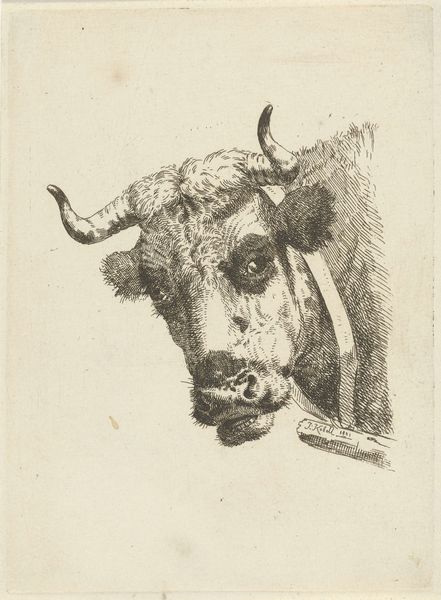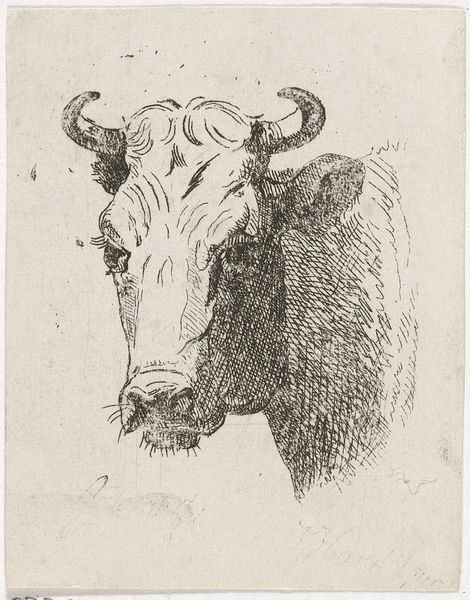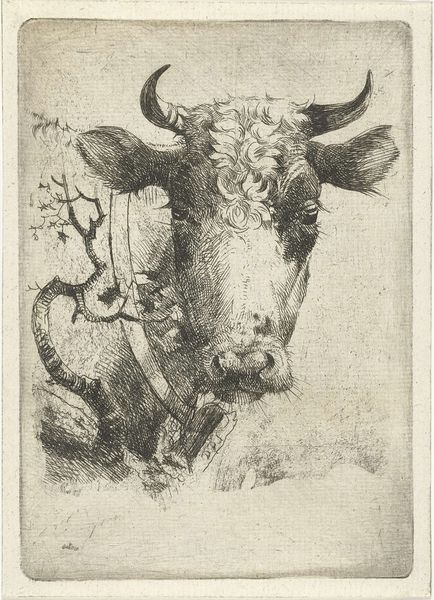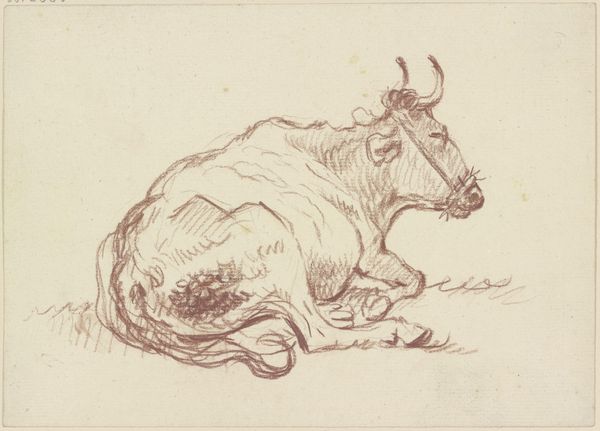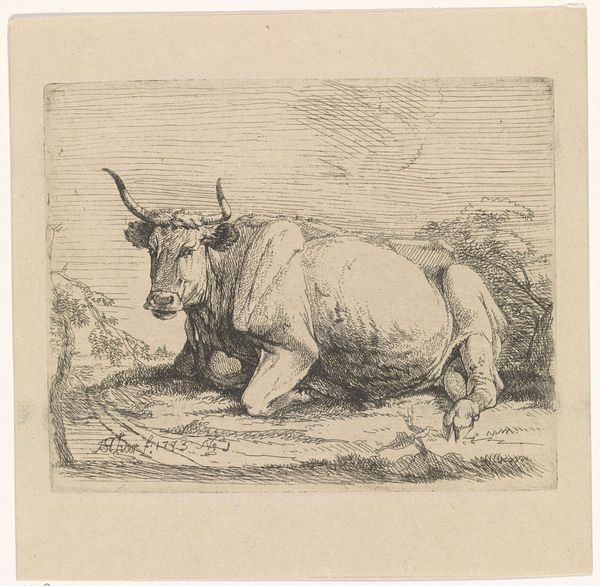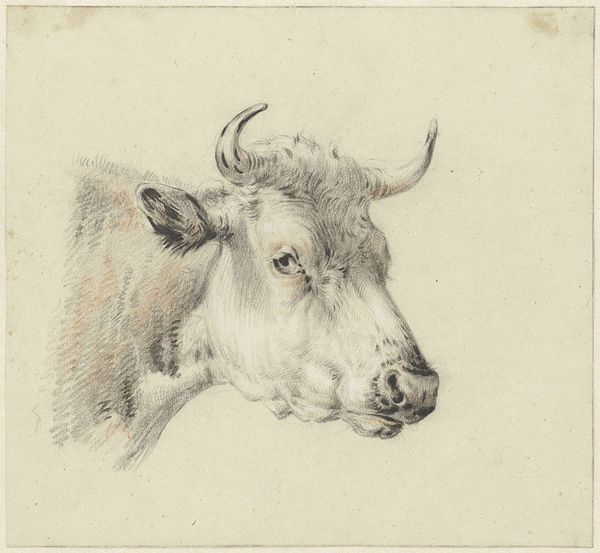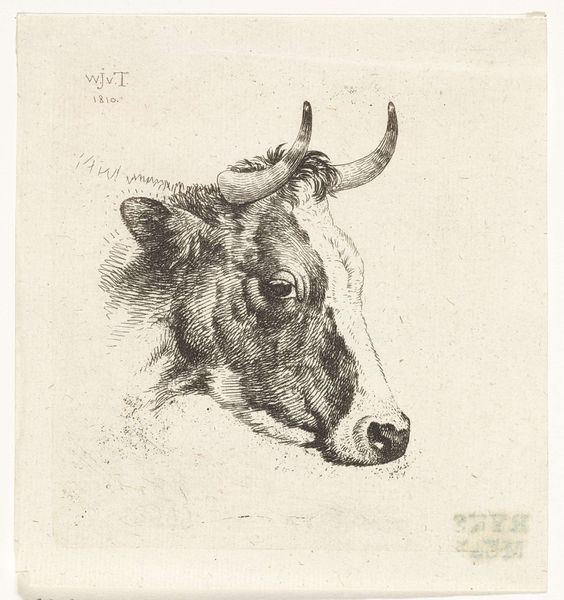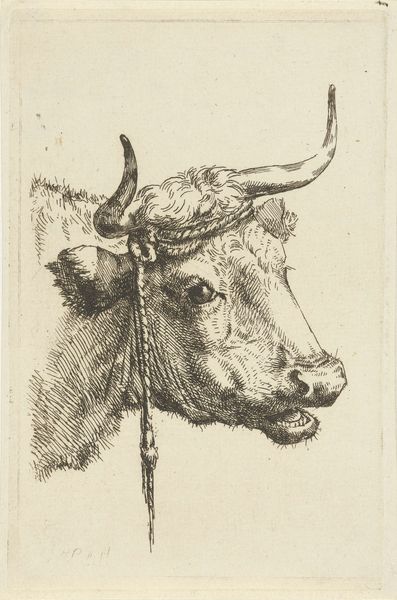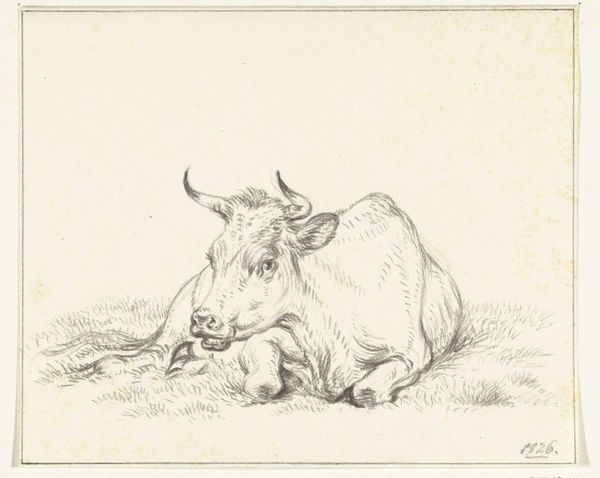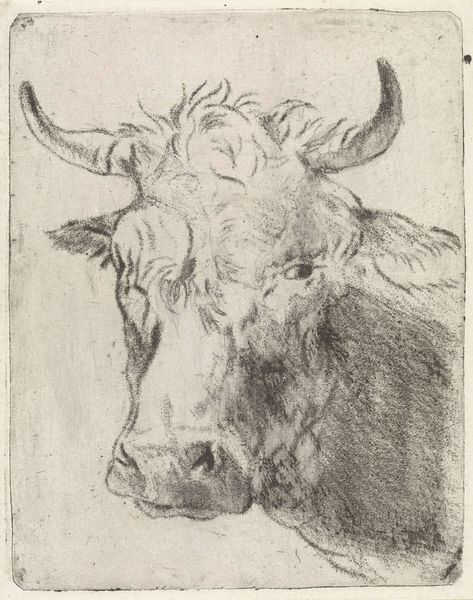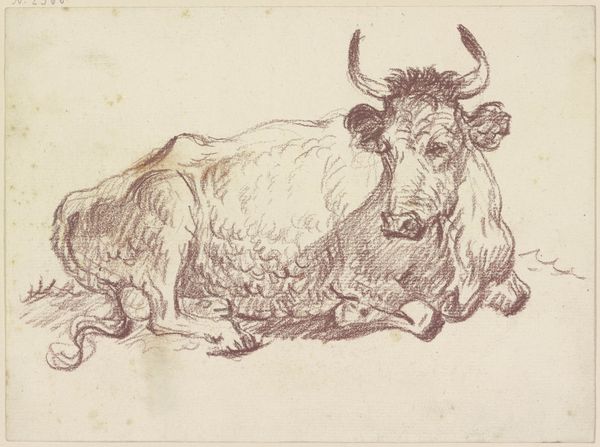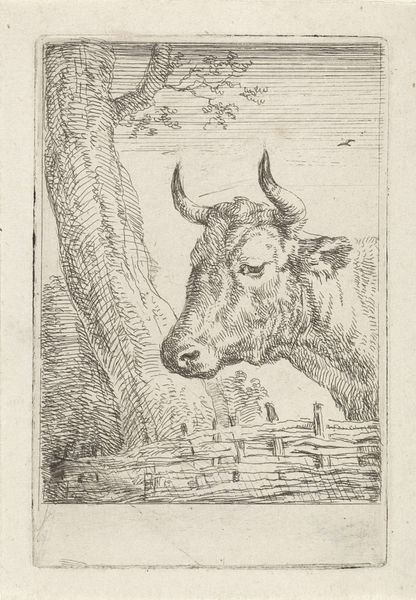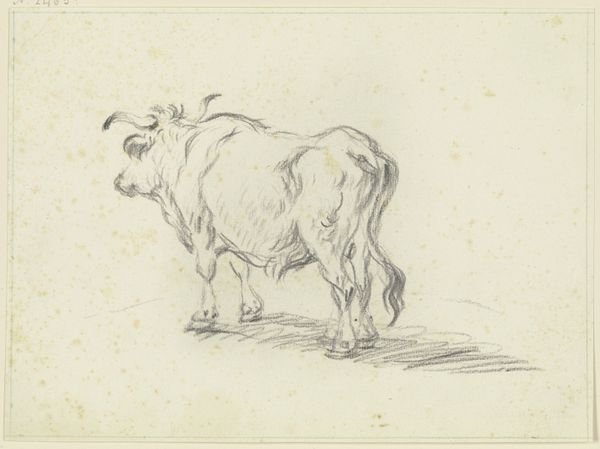
drawing, ink, pen
#
portrait
#
drawing
#
animal
#
dutch-golden-age
#
pen sketch
#
pencil sketch
#
ink
#
pen
#
genre-painting
#
realism
Dimensions: height 121 mm, width 97 mm
Copyright: Rijks Museum: Open Domain
Jan Kobell the Second created this etching called ‘Koeienkop,’ or ‘Cow’s Head,’ in 1801. At this time, artists were turning to direct observation in their studies. The image presents a close study of the animal’s features: its horns, furry head, and gentle eye. But how does this image create meaning? The etching was made in the Netherlands, a place where cattle have played a central role in the economy and culture for centuries. Dutch artists were among the first to specialize in animal portraiture. The art market was controlled by powerful guilds, and the choices artists made about subject matter were connected to the tastes of collectors and the demands of the market. This unidealized depiction of an animal also reflects a broader cultural interest in rural life. To understand this work better, we can turn to historical records, agricultural studies, and market reports. It all allows us to reflect on the role of art as something deeply embedded in the social and institutional fabric of its time.
Comments
No comments
Be the first to comment and join the conversation on the ultimate creative platform.
